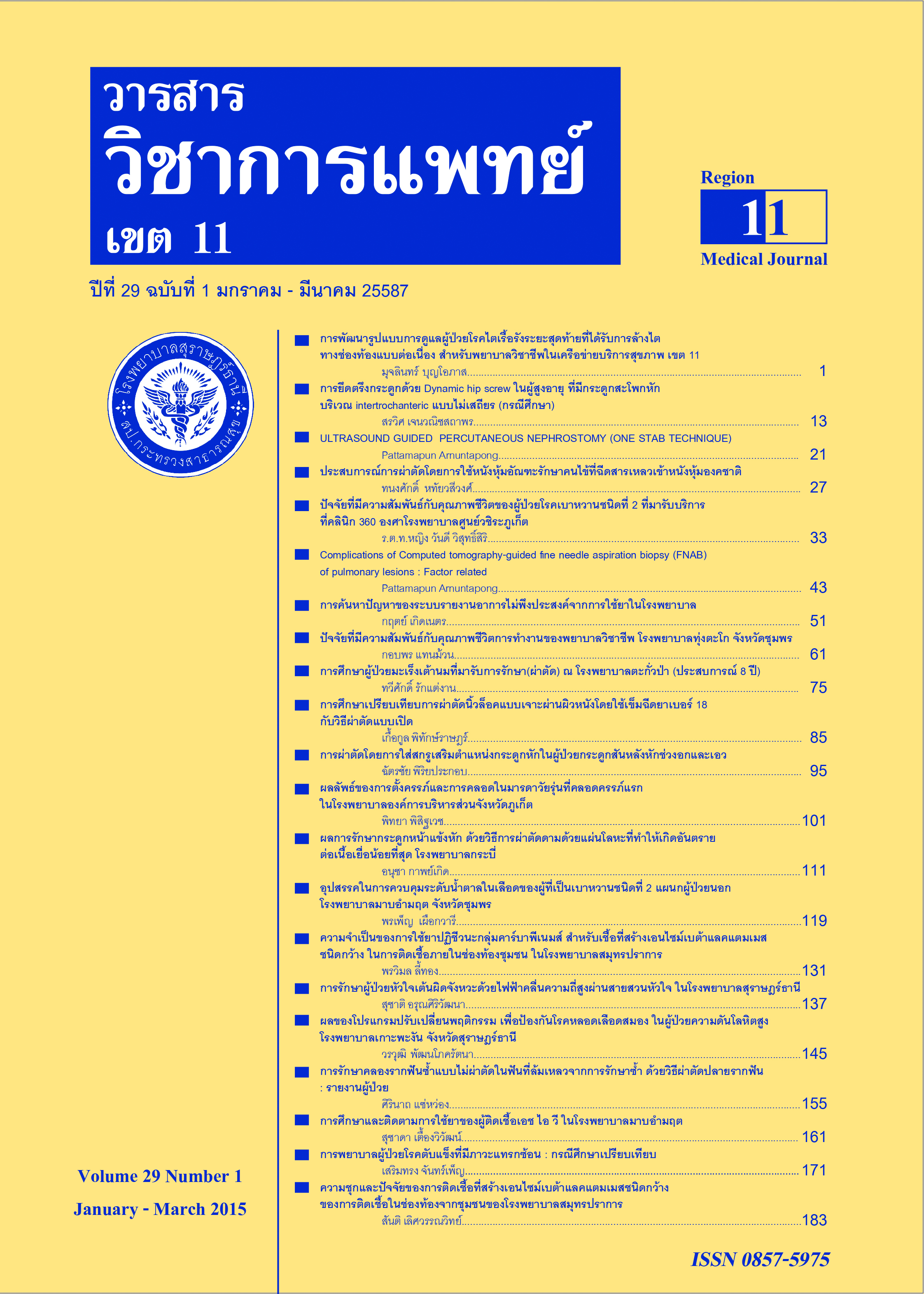The Prevalence and Risk factor of organism producing Extended spectrum Beta-lactamase inhibitor in Community Acquired Intraabdominal Infection in Samutprakarn Hospital
Keywords:
community acquired intraabdominal infection, Extended Spectrum Beta-lactamaseAbstract
Intraabdominal infection is the most common cause of infectious problem in surgical department gram negative bacilli organism especially Enterobacteriaceae is most common and is found that this organism have susceptibility of antibiotic is significantly decrease this study determined the prevalence of Extended Spectrum Beta-lactamae(ESBL)-producing Enterobacteriaceae in patients who had indication for patients with age 15 years everyone admitted in surgical department that was diagnosed to community acquired intraabdominal infection and surgery during January to June 2557.
Demographic data, history , indication for surgery, laboratory data and antibiotic use was recorded. Data were analyzed by using descriptive statistics.
The studies found that patients was diagnosed to community acquired intraabdominal infection with Extended Spectrum Beta-lactamae(ESBL)-producing Enterobacteriaceae were 32.6 by most of the patients had acute appendicitis were 93.75 which found that the infection in this group were found to have relatively high rate of drug resistance to antibiotics. So if we know the prevalence rate of abdominal infection community caused by pathogens. How could a selection of suitable antibiotics that depending on the sensitivity to antibiotics of bacteria. In the future may have additional studies the sensitivity of bacteria to antibiotics such as well.
References
Infection Society and the Infectious Disease Society of America . CID 2010:50(2):133-64.
2. Waiwarowooth J, Jutiworakul K. The Prevalence and Susceptibility patterns of ESBL-producing Klebsiella pneumoniae and Escherichia coli in Chonburi Hospital. J. Infect Dis Antimicrob Agents 2006:23.57-65.
3. Carrie A. Updated Guideline on Diagnosis and Treatment of Intra-abdominal Infection. AM Fam Physician 2010:15:694-709.





